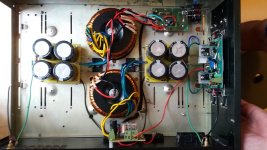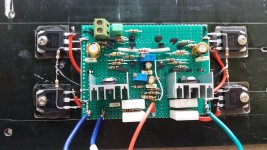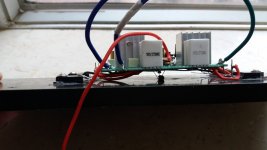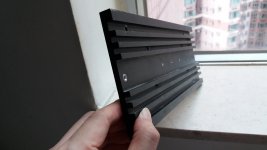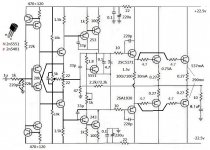I usually build Class AB, never built a Class A amp before.
My first build Class A amp, I think output is 15W pure Class A.
Each channel using two pairs NJW1302 / NJW3281 running 500mA idle current per transistor with +-22.5V supply voltage.
The heatsink size 30cm x 12cm base thickness is 5mm with 12 mm small fins.
Now my room temperture is around 27'C and the heatsink temperature will be 65'C, my finger can touch the heatsink but can not stay on the it more than 2 second.
I want to know for a 15W output Class A amp, how high a temperature the transistor will be in danger. Summer is coming, at that time the heatsink temperature must be very high, I want to know the safety temperature range to run the amp in Summer.
Best regards,
Patrick
My first build Class A amp, I think output is 15W pure Class A.
Each channel using two pairs NJW1302 / NJW3281 running 500mA idle current per transistor with +-22.5V supply voltage.
The heatsink size 30cm x 12cm base thickness is 5mm with 12 mm small fins.
Now my room temperture is around 27'C and the heatsink temperature will be 65'C, my finger can touch the heatsink but can not stay on the it more than 2 second.
I want to know for a 15W output Class A amp, how high a temperature the transistor will be in danger. Summer is coming, at that time the heatsink temperature must be very high, I want to know the safety temperature range to run the amp in Summer.
Best regards,
Patrick
Attachments
That's a lot of power (40W) for such a small heat sink, more like 55C on the sink would be safer.
Try reducing by half the idle current per device.
Try reducing by half the idle current per device.
Last edited:
That's a lot of power (40W) for such a small heat sink, more like 55C on the sink would be safer.
Try reducing by half the idle current per device.
I am thinking to add two computer fans to cool each heatsink
Thanks
